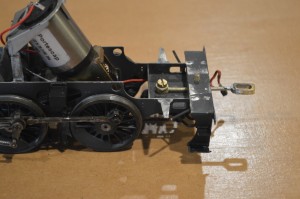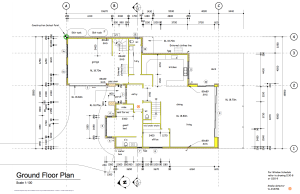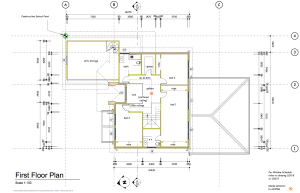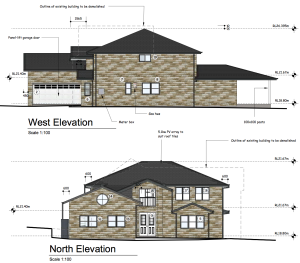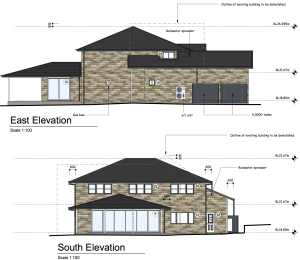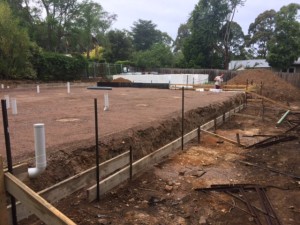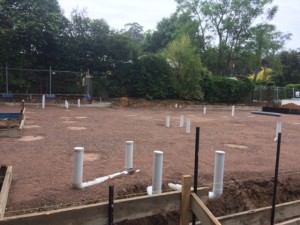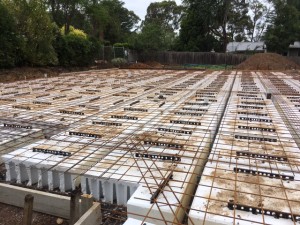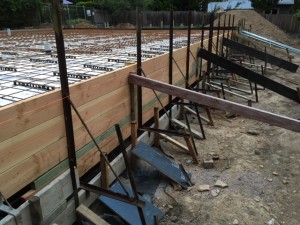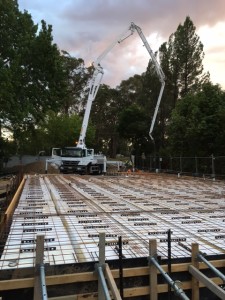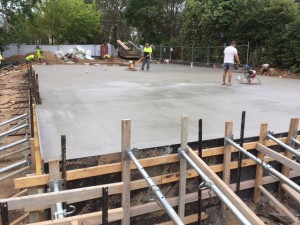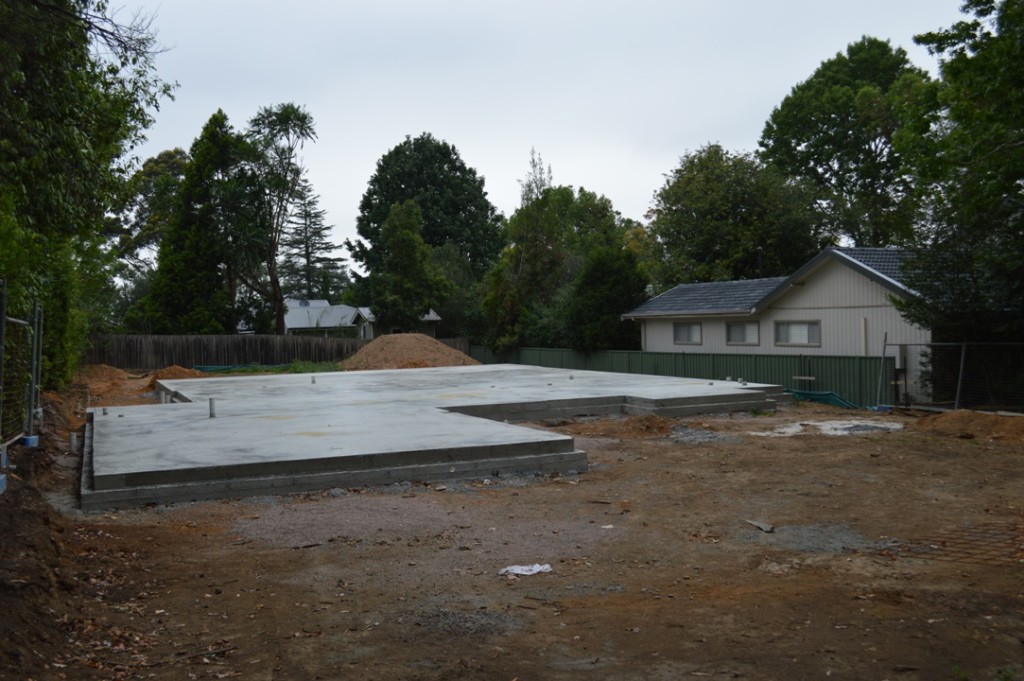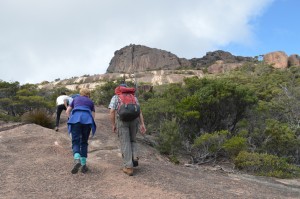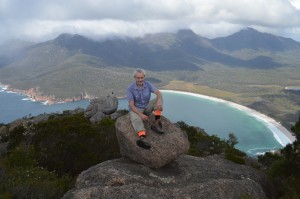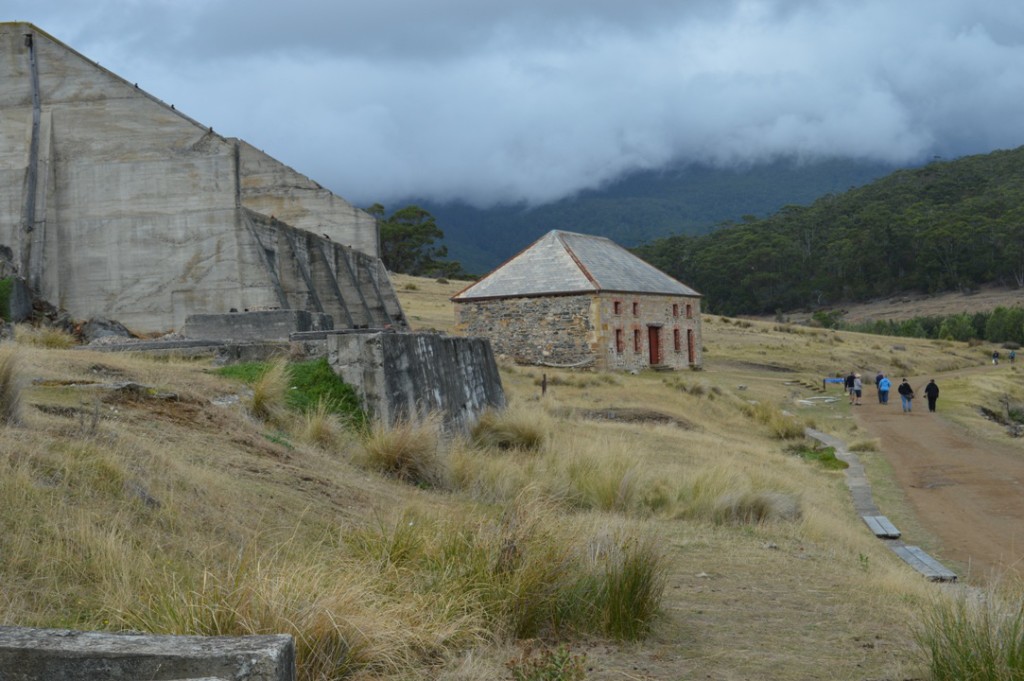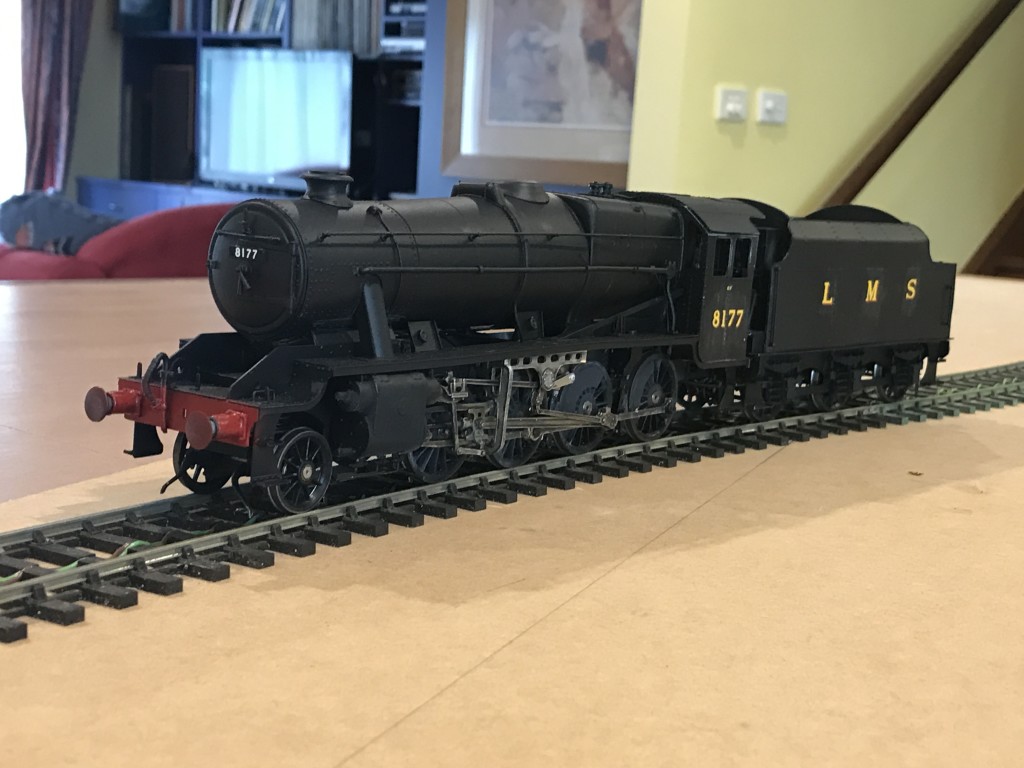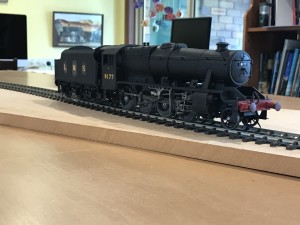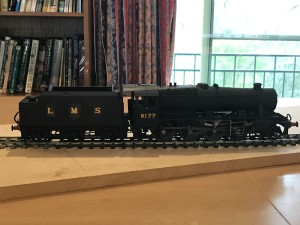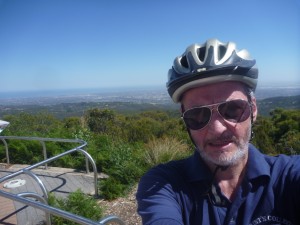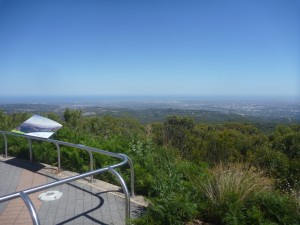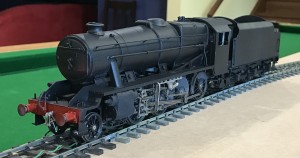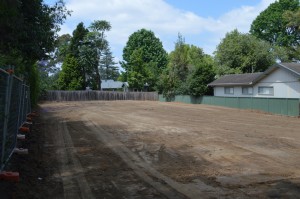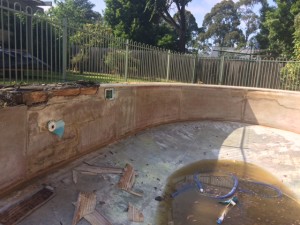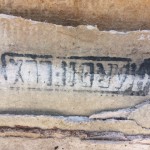Each year we aim to send out a letter to all our friends, hoping to keep all up to date with what we have been up to over the year.
Dear All,
David’s Bit:
In a way this has been a year where we start the next major project – building the house that we want in Glenbrook. There is nothing wrong with the one where we live now, apart from the facts that it is a long way from the nearest decent shops, 4km from the railway station and a significant addition to the length of time Sue has to drive to get home, compared to the new plot of land, which is 50m from shops and restaurants in Glenbrook, 300m from Glenbrook Station and only about 200m from the main Western highway out to country NSW.
So this is what it looks like now.
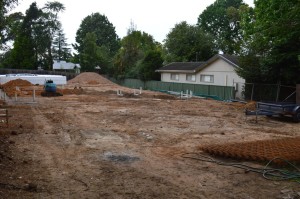 It’s a fair-sized block of land, 50m x 20m, and flat enough to be relatively easy to build on. There are houses on three sides, but the front of the house is opposite a park. We actually bought it about 5 years ago, but have been waiting to get enough money together to build the new house.
It’s a fair-sized block of land, 50m x 20m, and flat enough to be relatively easy to build on. There are houses on three sides, but the front of the house is opposite a park. We actually bought it about 5 years ago, but have been waiting to get enough money together to build the new house.
Inevitably there have been problems with council, despite the fact that we are trying to make it an environmentally-conscious house, conserving water and heat, and we aren’t creating a modern monster. In fact I have always wanted to live in a stone-built house, so this will be a modern house made from sandstone, but with double-glazing throughout, solar tiles built into the rooftiles to make it energy self-sufficient as far as possible, and we will collect rainwater for flushing the lavatories, etc.
We aren’t “downsizing” though: it will have four bedrooms, two with their own bathrooms, a large open-plan living area, with a large covered balcony looking out onto the 15m x 20m back garden.
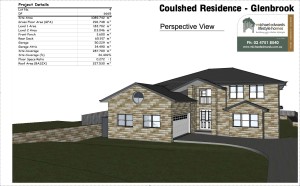 This is what it might look like (“might” because we are still negotiating with the Blue Mountains City Council about the 1½-storey garage. Actually this is important to me, because the upper level would have the only room into which Sue could not see as she walks past – important for ‘work in progress”, etc.
This is what it might look like (“might” because we are still negotiating with the Blue Mountains City Council about the 1½-storey garage. Actually this is important to me, because the upper level would have the only room into which Sue could not see as she walks past – important for ‘work in progress”, etc.
I had toyed with the idea of going for a glass-and-concrete modern architectural icon, but there were a few obstacles to this, I suspect: cost, the council (Glenbrook is a “living conservation zone”) and Sue. So sandstone it is (locally obtained, as will everything that we can get locally).
 Travel? Well the others may talk more about it, but my sole-traveller journey was to the UK this year, where I attended the British Cardiac Society, but more importantly saw some of my friends, and climbed Helvellyn with John!
Travel? Well the others may talk more about it, but my sole-traveller journey was to the UK this year, where I attended the British Cardiac Society, but more importantly saw some of my friends, and climbed Helvellyn with John!
As you can see, I lost my sole on the way up Helvellyn ….
Sue’s Bit:
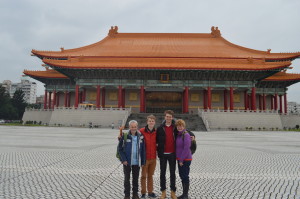 We have traveled a bit, Japan for skiing in January, with a side trip to Taipei.
We have traveled a bit, Japan for skiing in January, with a side trip to Taipei.
Taiwan was very interesting, with some wonderful museums and galleries, and some lovely countryside.
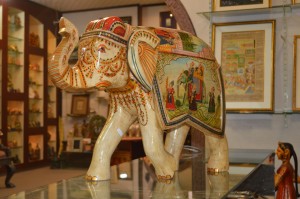 India for a conference in March meant that we are keen to talk about the elephant in the room, because that’s exactly what we had shipped home: a ½m tall wood-and-camel-bone hand-painted elephant!
India for a conference in March meant that we are keen to talk about the elephant in the room, because that’s exactly what we had shipped home: a ½m tall wood-and-camel-bone hand-painted elephant!
I went to Chicago which was fabulous for another conference in November, and to Perth in September. David went to the UK in June.
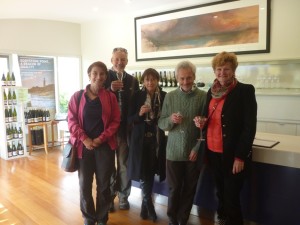
One of our best weekends was in Launceston with David and Andrea McKay and Carol Pollock. David and Andrea sail half the year and work half the year.
Work was tough as my colleague Josette Eris, aged 56 died in May. Jim Johnson who set up my practice died in July, and our secretary in Penrith had a stroke in March. It would be fair to say medical administrators are not my favourite people. I can sit in meetings with lots of people and very few actually have direct patient contact. Medical administrators speak a foreign language and appear to love the process not the outcome. I am lucky to have great medical colleagues both at the Mater and in Penrith. It is a privilege to be involved with some of my renal patients for over 20 years. I do a lot more obstetric medicine now and I love it.
Dad has spent quite a bit of time in hospital after a couple of falls. Mum has been quite amazing coping with all the upheaval. Dad has stopped driving.
Amy, our practice manager manages me very well and is having a much wanted baby next year. I am going to have to organise my own life and phone.
Now Nick and Andrew have flown the nest I spend more time with old uni and school friends and our local friends. We all try to multi task. All problems are solved with champagne. David and I will have been married 30 years next year.
Nick’s Bit:
As the year draws to a close the Christmas letter forces us all to consider the year that was since last sitting down to compose this yearly reflection. I am glad to note that this year I am at least sitting down on Christmas Eve to write my portion of the letter, rather than a few days post Christmas as was the case last year. 2016 has been another good year for the family and myself by all accounts.
Firstly considering my ongoing medical education, of which I am now more than half way! This year has presented itself with new challenges for me with my first ‘clinical year’. This meant I spent the year in the hospital following various teams around the hospital attempting to learn as much as possible ‘on the job’. This has very varied results depending on the interest of the team in teaching, some rotations were fantastic with opportunities to see patients on my own and assist in operations, however others somewhat less so. My interest in surgery continues to grow much to Mum and Dad’s dismay, and I have been elected as President of the Surgical Society for 2017, which should present me with a new challenge.
University also presented its share of amusement and socialisation through various parties, and two conferences across the year, one held in Townsville, the other a surgical conference in Brisbane. Both great experiences, with some focus on learning but mostly just having a good time.
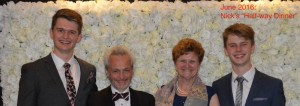 To celebrate reaching the halfway point of our medical degree our year had our ‘Half-way Dinner’, which was a great night where I managed to win two awards, one the “Turk and JD award” for the two best friends with one of my friends Ali, and the other the “Family look-alike award” courtesy of Andrew.
To celebrate reaching the halfway point of our medical degree our year had our ‘Half-way Dinner’, which was a great night where I managed to win two awards, one the “Turk and JD award” for the two best friends with one of my friends Ali, and the other the “Family look-alike award” courtesy of Andrew.
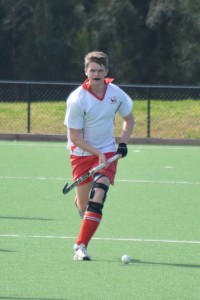 I have continued to play plenty of sport including hockey and cricket, and I am pleased to report my replacement ACL has stood the test of a season of hockey, and our Ski trip in January. I continue to wear a knee brace when playing but this is probably more for peace of mind than any real functionality. I was also able to continue my success with the bat in cricket last season, ending up with the most runs for the club! A highlight was in the final batting batting as opener and lasting through the entire innings, with patience far greater than usually shown.
I have continued to play plenty of sport including hockey and cricket, and I am pleased to report my replacement ACL has stood the test of a season of hockey, and our Ski trip in January. I continue to wear a knee brace when playing but this is probably more for peace of mind than any real functionality. I was also able to continue my success with the bat in cricket last season, ending up with the most runs for the club! A highlight was in the final batting batting as opener and lasting through the entire innings, with patience far greater than usually shown.
I hope you all have had an enjoyable year and enjoy the holiday period!
Nick
Andrew’s Bit:
2016 has been yet another eventful year for both myself and the Coulshed family as a whole – between the time spent on university, friends, family and extracurricular activities, this Christmas letter presents a rare opportunity to actually stop and think about everything that has happened!
Probably the most significant part of the year has been continuing my medical studies at UNSW. This has been pretty similar to 2015, continuing the daily lectures, practicals and tutorials. I am fairly relieved to have now finished most of the on-campus part of my degree, as I am going on to the much more interesting clinical studies next year.
 What has changed, however, is my involvement in broader university life. This year, I have thrown myself quite enthusiastically at the various events and societies around campus, getting involved in educations such as the Medical Society, College House Committee, and Australian Medical Students Association. In doing so, I’ve had a fairly exciting time travelling to conferences and seminars around Australia, including to Townsville, Newcastle, Canberra and Melbourne.
What has changed, however, is my involvement in broader university life. This year, I have thrown myself quite enthusiastically at the various events and societies around campus, getting involved in educations such as the Medical Society, College House Committee, and Australian Medical Students Association. In doing so, I’ve had a fairly exciting time travelling to conferences and seminars around Australia, including to Townsville, Newcastle, Canberra and Melbourne.
 I was also lucky enough to spend some time in Nepal at the start of the year, doing a 2 week placement at the Scheer Memorial Hospital in Banepa, then travelling around Kathmandu and Pokhara.
I was also lucky enough to spend some time in Nepal at the start of the year, doing a 2 week placement at the Scheer Memorial Hospital in Banepa, then travelling around Kathmandu and Pokhara.
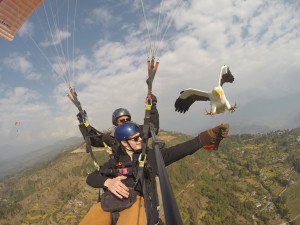
This included going Parahawking, which involves going paragliding whilst being guided by birds of prey, which you then feed in midair! Evidence is attached.
Back in Sydney and the Blue Mountains, my living conditions have stayed fairly similar, staying on in Fig Tree Hall for another year. However, this time I took a companion with me in the form of a Chinese Fighting Fish named Vodka, an 18th birthday present from a school friend.
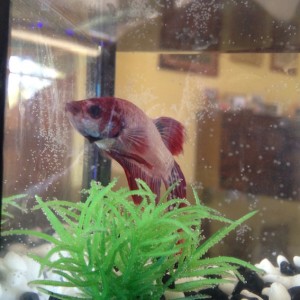
The fish was named as a reflection of my college’s no alcohol and no pets policy. Unfortunately, he managed to pass away just before my exams, and as such some of my study was postponed to hold his funeral on the college roof, which was one of the few sad moments of the year.
One success of the year was taking hockey back up again, as I had missed last season after dislocating my patella in O-week. This was a lot of fun, and playing with the university team presented another great way to avoid studying. I did manage to dislocate my patella again midway through the season, however, albeit during a break week at a party! Having done so twice before I was a bit sick of going to hospital, and managed to just relocate it myself and just go and see the GP the morning after.
There are a lot of other things I could mention, but I won’t bore with the details – safe to say I’ve spent far too much time having fun and meeting new people, and far too little in front of a desk. However, it’s been a successful year anyway, and I’m hoping 2017 will be the same!
Wishing everyone a happy holidays and a great new year – Andrew
So, from all of us:
Merry Christmas and we wish you all a Happy New Year
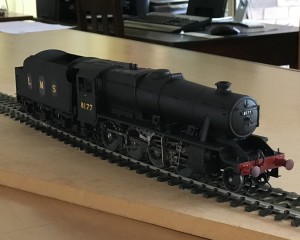 Even at this stage there are mistakes to be made, and lessons to learn, perhaps.
Even at this stage there are mistakes to be made, and lessons to learn, perhaps.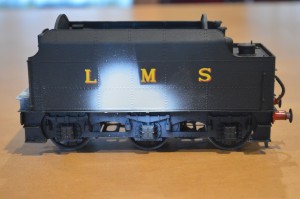 Disaster. They were large enough patches that, even allowing for my intention to produce a weathered appearance, I couldn’t leave them as they were. I didn’t want to have to do the whole sides all over again, so rubbed off the sections of affected paintwork with a glass fibre brush, back to bare metal, then resprayed with primer, masking the letterwork.
Disaster. They were large enough patches that, even allowing for my intention to produce a weathered appearance, I couldn’t leave them as they were. I didn’t want to have to do the whole sides all over again, so rubbed off the sections of affected paintwork with a glass fibre brush, back to bare metal, then resprayed with primer, masking the letterwork.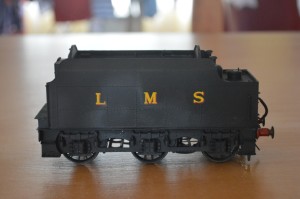 Then I resprayed with matt black.
Then I resprayed with matt black.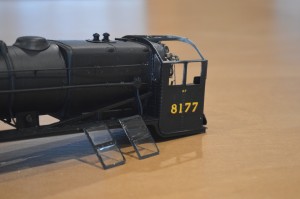 Initially I wanted to use microscope coverslips to make real glass windows, and even bought a tungsten scriber to cut the glass. However I soon realised that the coverslips were incredibly fragile, and I thought that in my hands would soon be broken in place on the loco., when replacement would be very difficult. Also I realised that there was no way to produce the front-facing windows on the cab from glass, anyway. Whatever method I used, I realised that the front windows were going to be impossible to position without taking the cab roof off. So rip it off I had to do (well, carefully unsolder and lift it off ….).
Initially I wanted to use microscope coverslips to make real glass windows, and even bought a tungsten scriber to cut the glass. However I soon realised that the coverslips were incredibly fragile, and I thought that in my hands would soon be broken in place on the loco., when replacement would be very difficult. Also I realised that there was no way to produce the front-facing windows on the cab from glass, anyway. Whatever method I used, I realised that the front windows were going to be impossible to position without taking the cab roof off. So rip it off I had to do (well, carefully unsolder and lift it off ….).